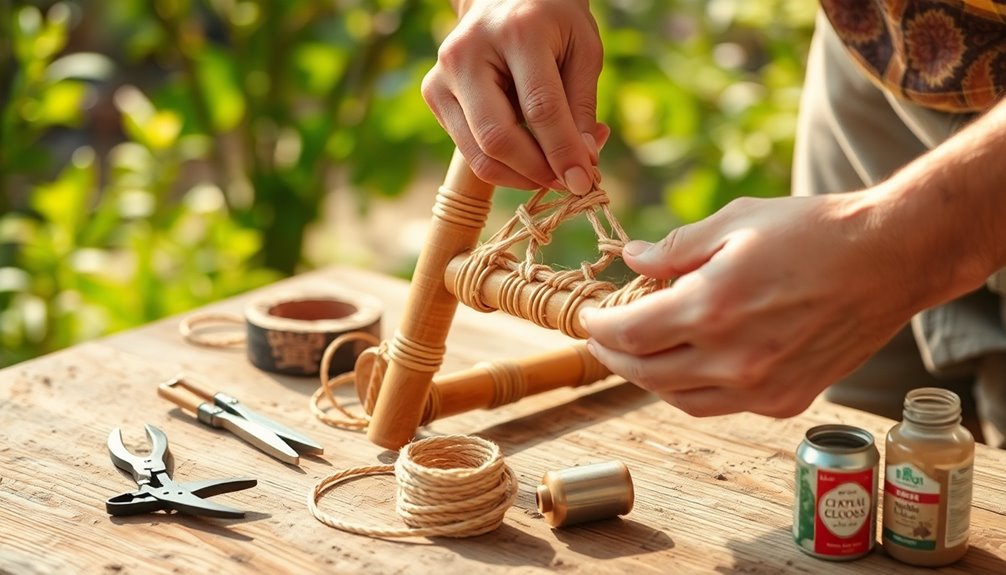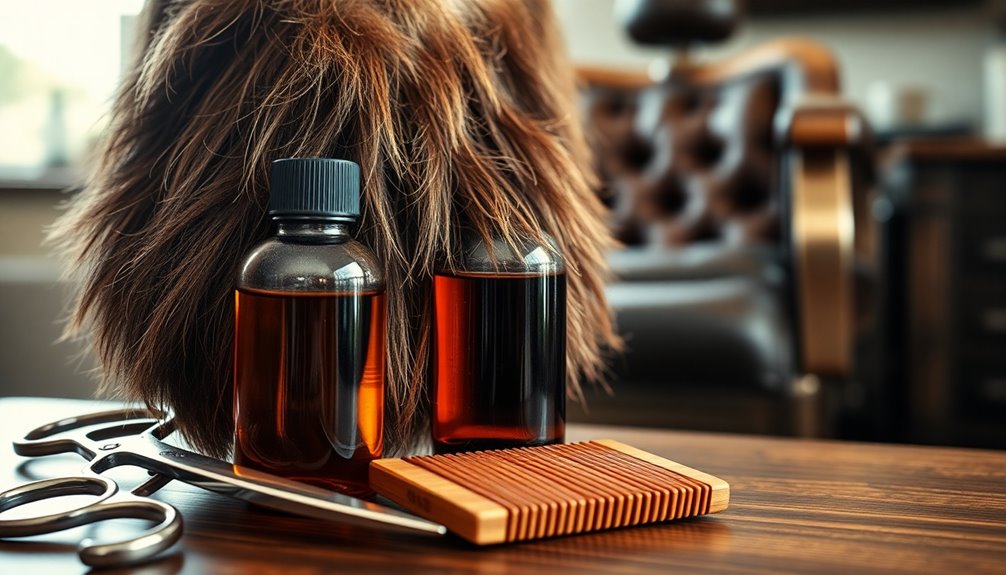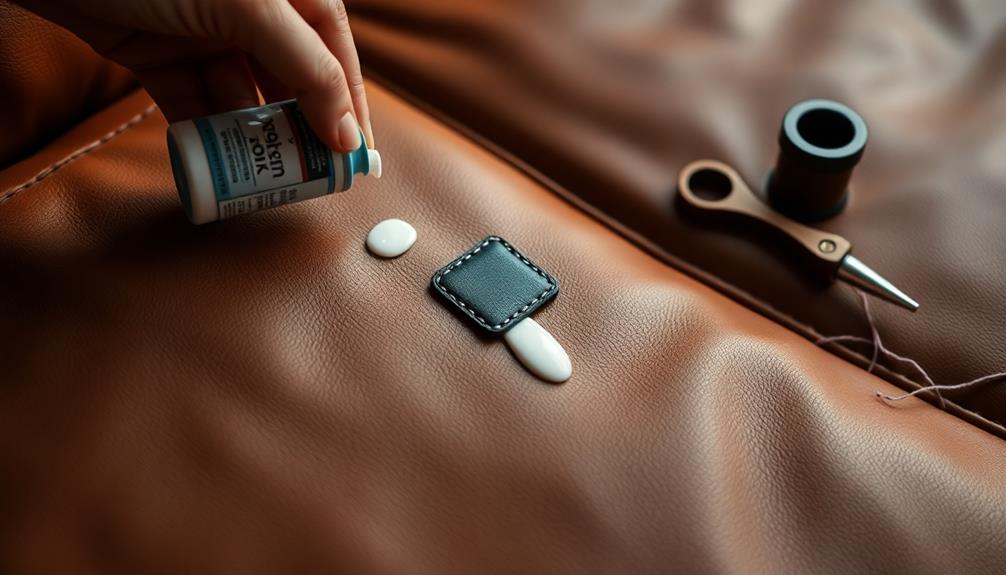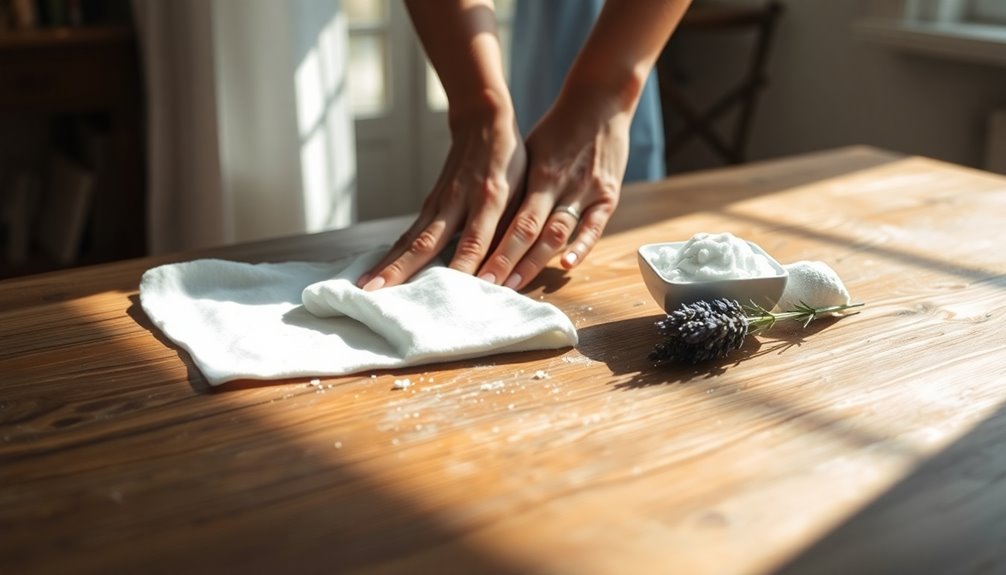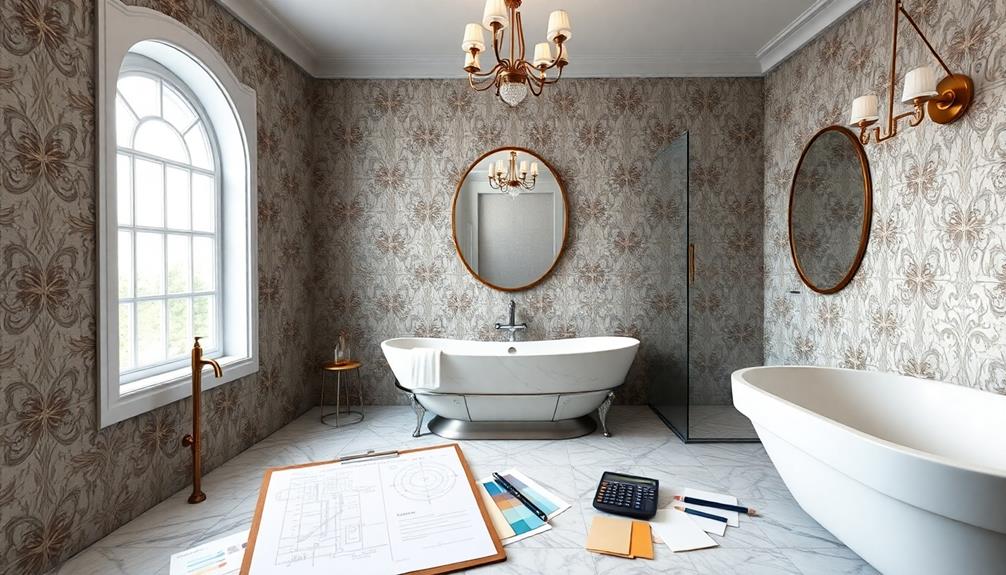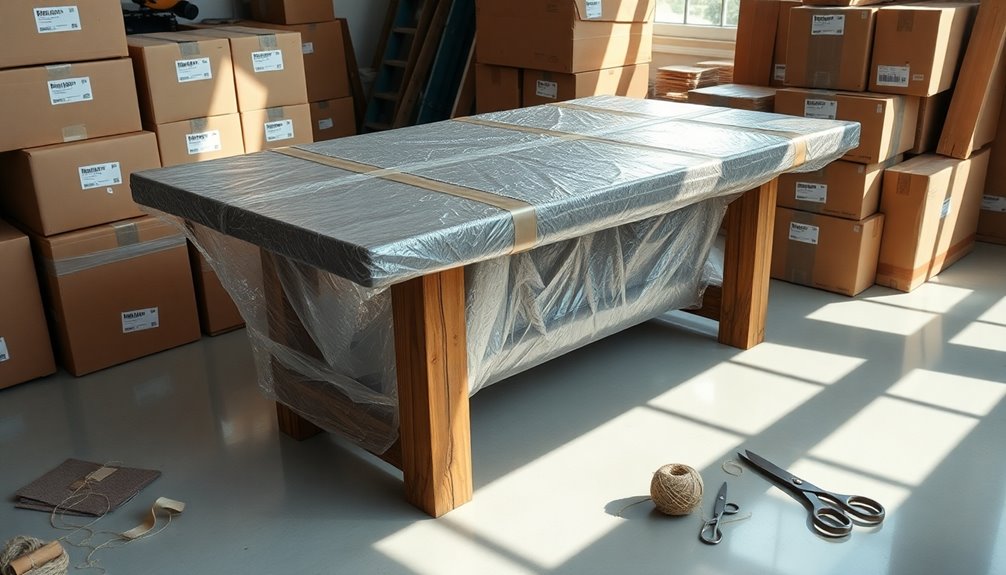To fix rattan furniture, you’ll start by cleaning it with a mild detergent solution and a soft cloth. Next, check for any damage, like loose strands or cracks. If you find issues, choose the right adhesive and apply it carefully to secure broken areas. For strands that need replacing, remove the damaged bits and weave in new ones, soaking them beforehand for flexibility. Finish by lightly sanding the surface, applying stain or paint, and sealing with varnish. Regular maintenance is key to keeping your rattan furniture in shape, and there’s plenty more to explore on enhancing its lifespan. Additionally, it’s important to store your rattan furniture in a dry place and avoid exposure to harsh sunlight, as this can cause fading and deterioration over time. When considering further care, searching for repairing plastic wicker furniture tips can be beneficial, as many techniques overlap between the two materials. By following these guidelines, you can ensure your furniture remains both functional and beautiful for years to come.
Key Takeaways
- Clean the furniture using a mild detergent solution and a soft cloth to remove dirt and debris before repairs.
- Identify damaged areas by inspecting rattan strands for looseness, breaks, or fraying, and assess structural integrity.
- Use the appropriate adhesive, such as wood glue or rattan adhesive, and apply it precisely to secure any loose strands.
- Replace broken rattan strands by removing them, soaking new strands for flexibility, and weaving them into the existing pattern.
- Finish repairs with light sanding, applying stain or paint, and sealing with varnish for protection and durability.
Cleaning the Furniture
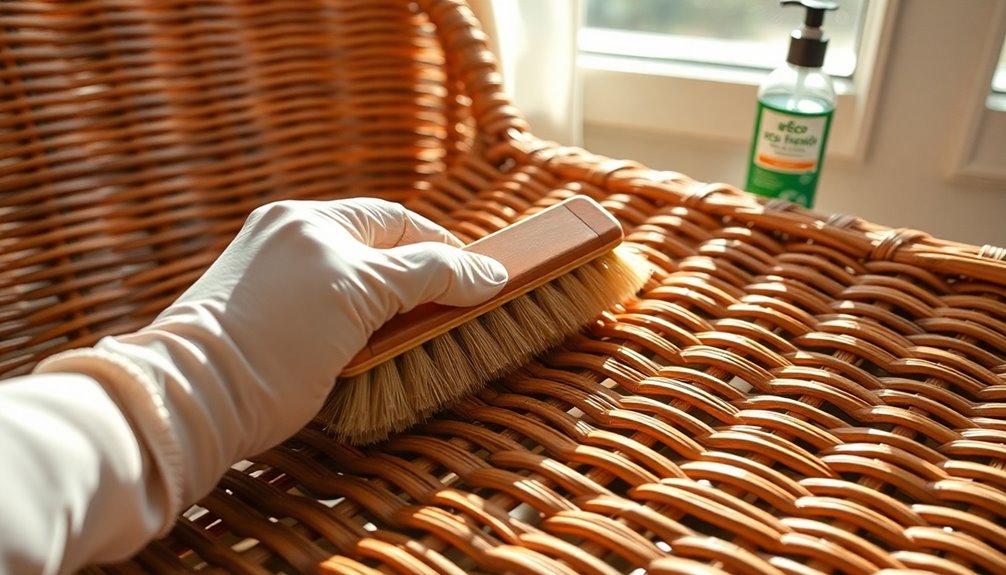
Cleaning your rattan furniture is essential for maintaining its beauty and longevity. Start by removing loose dust and soil. Use a handheld vacuum or brush attachment to clear away dirt, focusing on crevices and woven areas where debris accumulates. A soft-bristled brush can help sweep away surface dirt, while a toothbrush or cocktail stick can tackle detailed cleaning.
Next, prepare your cleaning solution. Mix a few drops of mild detergent with a gallon of warm water, or use equal parts water and white vinegar for a natural option. Stir gently to ensure the soap mixes well. Avoid harsh chemicals, as they can damage the rattan fibers. Additionally, regular cleaning is crucial for maintaining the appearance of your rattan furniture.
Now, dip a soft cloth or sponge into the solution and wring out excess liquid. Gently wipe the rattan, applying light pressure. For small cracks, use the cleaning solution on a toothbrush for thorough cleaning. Rinse the furniture with clean water, preferably using a garden hose.
Finally, wipe away excess water with a soft cloth and let the furniture air dry in a well-ventilated area or direct sunlight. Once dry, consider applying a coat of shellac or lacquer for added protection.
Identifying Damaged Areas
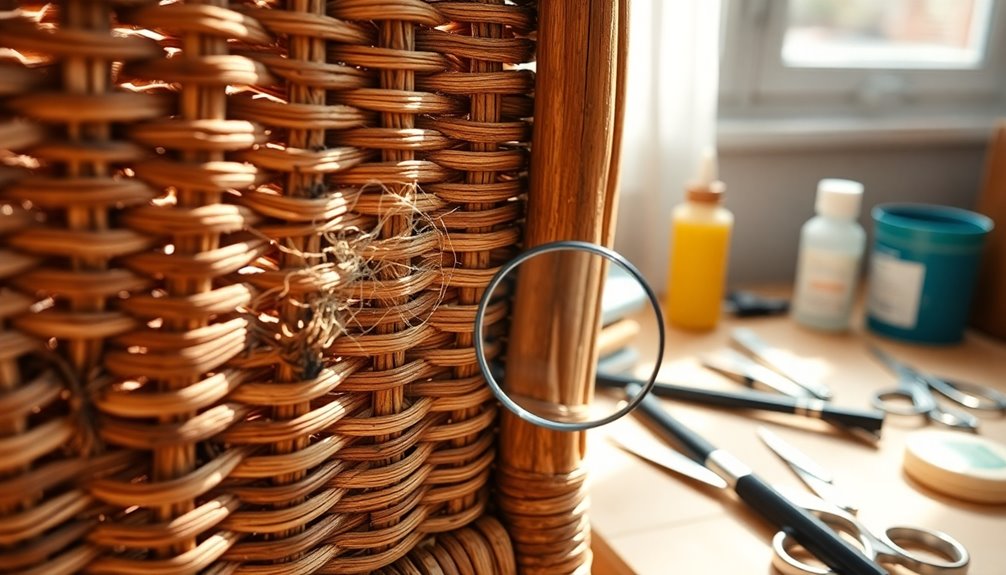
Before you start repairing your rattan furniture, it's crucial to identify any damaged areas that could impact its appearance and stability. Begin by examining the rattan strands closely. Look for any that are loose, broken, or frayed at the ends. Pay attention to strands that might have detached from the main weave. It's also important to note the pattern and color of these damaged strands in case you need to replace them.
Next, inspect the weave for cracks or holes, especially in load-bearing areas. Check for signs of discoloration around these imperfections, as it can indicate more extensive damage. Determine whether these issues are minor or if they compromise the structural integrity of the furniture. Regular inspection is key to preventing further damage.
Assess the overall stability of your piece. Look for sagging in the seats and backs, and inspect the chair legs for cracks or breaks that may affect its strength. Additionally, check for signs of fading, water damage, or warping, as well as any loose wrappings or unevenly contracted fibers. Identifying these issues will guide you in making effective repairs.
Applying Adhesive Properly
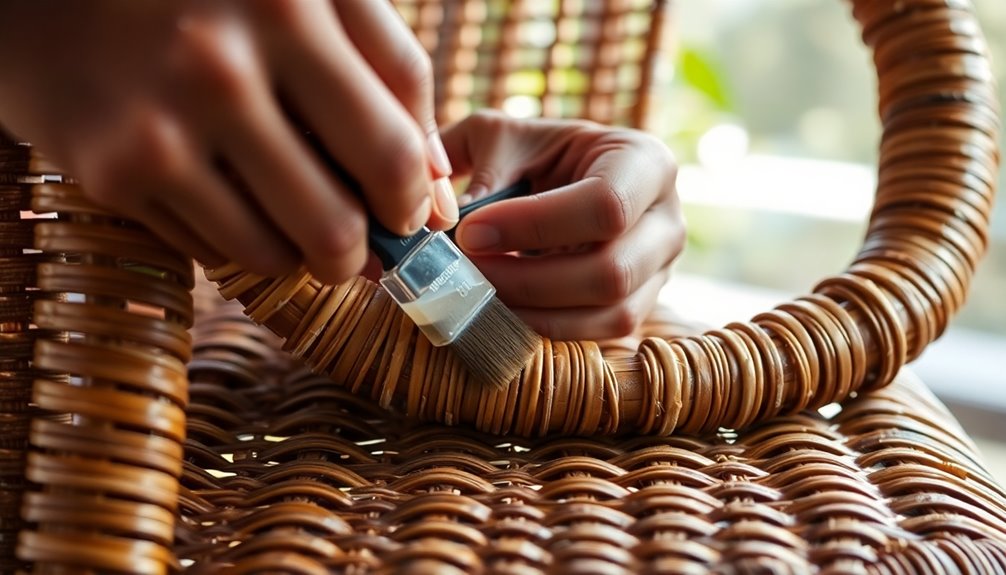
Applying adhesive properly is essential for ensuring a strong and lasting repair on your rattan furniture. Start by choosing the right adhesive; high-quality wood glue or specialized rattan adhesive works well. For stronger bonds, consider using 2-part epoxy resin glue. If you're dealing with loose pieces, super glue (cyanoacrylate) can be effective, especially if it dries clear and is waterproof for outdoor use.
Before applying, clean the furniture thoroughly to remove dirt and debris. Use a brush to gently dust the surface, then wipe it down with soap and water. Make sure everything is completely dry; a hairdryer can help warm and soften the rattan weaves if needed. Repairing worn furniture not only enhances its appearance but also extends its lifespan and usability.
When applying the adhesive, use a tiny amount to avoid excess residue. A small brush or spatula allows for precise application, especially into splits or cracks. Hold the glued area in place for several minutes to ensure it sets properly, and apply super glue along the bottom of the strand for secure fixation. Finally, remember to wait for the adhesive to dry completely before using the furniture again, which might take several hours or even up to 24 hours.
Weaving Replacement Strands
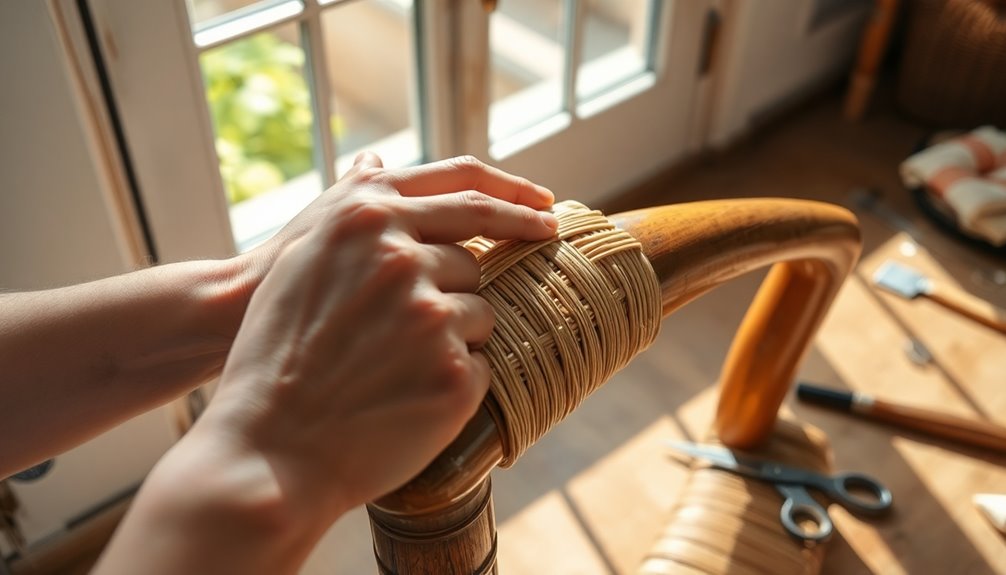
Often, weaving replacement strands into damaged rattan furniture can seem daunting, but it's a straightforward process that restores both strength and aesthetics. Start by identifying the damaged areas and removing the broken strands with scissors or pliers, leaving a small amount of slack on either side. Measure and cut a new rattan strand that matches the original's diameter and color, making it slightly longer for adjustments. Soak the new strands in water for 30 minutes to an hour to increase flexibility, then drain the excess water. Additionally, using natural rattan for replacements can enhance the overall appearance due to its unique patterns.
If needed, apply a small amount of super glue to one end of the new strand to hold it during weaving. Use pliers or a small instrument like a toothbrush to weave the strand into the existing pattern, threading it over and under the perpendicular segments. Adjust the new strand to ensure a snug fit, pulling it taut as you go. Once woven, tuck the ends beneath the existing material and trim any excess to match the current weave. Secure the other end with glue, holding it in place for a few minutes. Allow the glue to dry completely, ensuring your repair is stable and seamless.
Final Touches and Maintenance
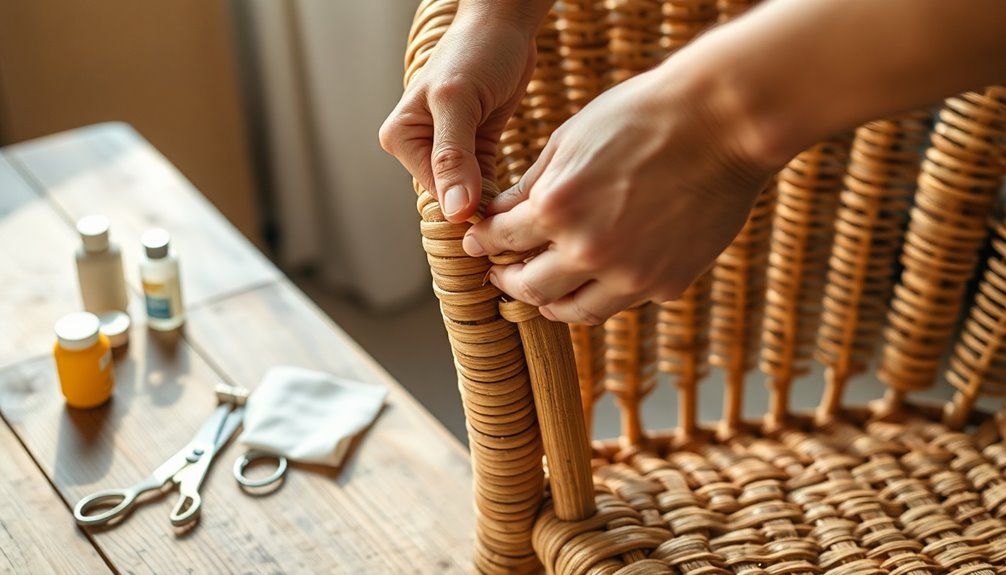
Completing your rattan furniture repair involves a few essential final touches and maintenance steps that ensure longevity and aesthetics. Start by lightly sanding the rattan surface with fine-grit sandpaper (180-220 grit) to create a smooth base. Next, apply a stain or paint that complements your decor, using a brush or sponge for an even coat. Allow it to dry thoroughly before adding any additional coats. Once you're satisfied, seal your work with a coat of clear varnish, ensuring it cures for 24-48 hours before using the furniture. Regular inspections can help identify issues early, prolonging furniture life and preventing wear and tear.
For regular maintenance, vacuum or use a brush attachment to remove dust and debris. For stubborn dirt in hard-to-reach areas, a toothbrush or cocktail stick can be handy. Clean the rattan with a mild soap solution, avoiding excess moisture. Rinse with clean water and wipe down with a soft cloth, allowing the furniture to dry in a well-ventilated area.
Lastly, apply a quality sealant to protect against moisture and environmental damage. Use multiple thin coats for durability, and don't forget to apply a final clear finish for that polished look. Your rattan furniture will not only look great but also stand the test of time!
Frequently Asked Questions
How Can I Prevent Rattan Furniture From Getting Damaged?
To prevent your rattan furniture from getting damaged, keep it clean by dusting regularly and using a damp cloth for gentle cleaning. Maintain a stable humidity level and avoid direct sunlight to prevent fading and mold growth. Protect it from extreme heat and use protective finishes. When moving, lift the furniture instead of dragging it. Lastly, regularly inspect for pests and treat any issues promptly to ensure longevity.
What Tools Do I Need for Rattan Furniture Repair?
For rattan furniture repair, you'll need a few essential tools. Start with scissors or pruning shears for cutting strands, and pliers for gripping. Use wood glue or super glue for bonding, and consider epoxy for major breaks. A soft-bristled brush helps clean, while warm soapy water preps surfaces. Plus, keep replacement rattan strands handy, along with a hairdryer to soften weaves. Finally, sandpaper smooths out any rough spots for a polished finish.
Can I Use Heat to Fix Rattan Furniture?
You can use heat to fix rattan furniture, but you've gotta be careful. Applying gentle warmth with a hairdryer can help you adjust loose strands or soften fibers for weaving. Just avoid excessive heat, as it can weaken or damage the rattan. Instead, focus on using heat strategically to set adhesives or ease repairs. Always remember to keep the surface clean and dry before starting, ensuring your work lasts longer.
How Often Should I Maintain My Rattan Furniture?
You should maintain your rattan furniture regularly to keep it looking great. Start with weekly maintenance, using a soft brush or handheld vacuum to remove dirt, followed by a gentle wipe with soapy water. Monthly, give it a deeper clean, focusing on crevices and using a toothbrush for stubborn spots. Seasonal cleaning is essential too, especially before storing it for winter. An annual deep clean will ensure it stays in top shape for years to come.
Is It Safe to Place Rattan Furniture Outdoors?
Yes, you can place rattan furniture outdoors, but it's important to take precautions. Don't leave it exposed to the elements for long periods. Protect it from direct sunlight, rain, and snow to prevent fading and moisture damage. If the weather gets extreme, store it indoors. Also, keep it away from heat sources. By doing this, you'll help maintain its beauty and durability for years to come.
Conclusion
By following these steps, you can easily restore your rattan furniture to its former glory. Remember to keep it clean, regularly check for damage, and apply adhesive carefully to ensure lasting repairs. If you need to replace strands, take your time to weave them neatly. Finally, maintain your furniture with love and care to enjoy its beauty for years to come. With a little effort, you'll have rattan pieces that look great and last long!
